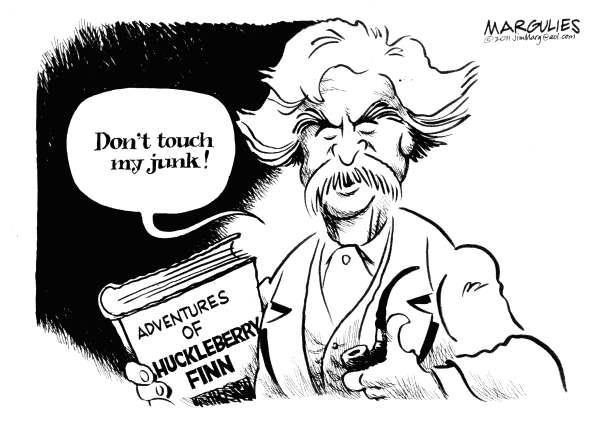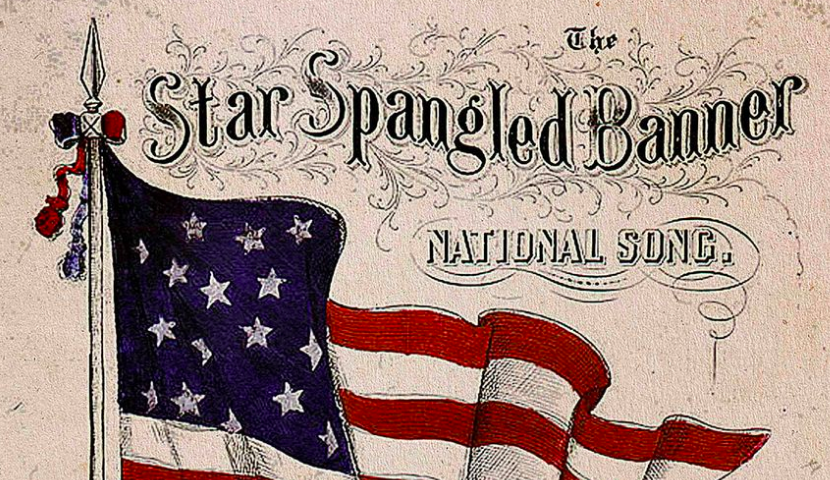Jess Pevner
Mark Twain’s The Adventures of Huckleberry Finn has a history fraught with contention. At the time of the novel’s 1885 publication, opponents denounced Huck’s rough disposition and his familial bond with a slave. Parents forbade their children from reading Huck Finn in fear that its radical attitudes would corrupt them. Interestingly, the novel has faced equally potent backlash in the modern era. In fact, Huck Finn stands as the fourteenth most challenged book from 2000-2009. Many schools including local Friends’ Central have banned the novel on the grounds of racial insensitivity. Students and parents across America have taken offense to the prevalence of N-word in the book. School administrators now face the question: does Huck Finn belong in the modern classroom?
The historical context of Huck Finn provides valuable insight into antebellum America. Twain intertwines information about society through compelling themes and characters. For example, Twain embodies America’s rampant racism in Pap. In his tirade against the government, Pap complains about a “mulatter” being able to vote and the waiting time required before auctioning a free black man. He says, “here’s a govment that calls itself a govment, and yet’s got to set stock-still for six whole months before it can take ahold of a prowling…free n—-r.” . Pap thus serves as an archetype for the Southern man and typical political views of the time period. The historical educational value of Huck Finn extends far beyond this example. As J. Whyatt Mondesire, president of Philadelphia NAACP, puts it: “It’s part of American folklore and history….You’re not going to learn anything by closing your eyes and not reading.” . In reading the novel, modern students therefore gain a unique perspective on history that simply cannot be ignored.
Opponents of Huck Finn often cite Jim’s characterization as stereotypical and offensive. One such critic goes as far to say that “Huckleberry Finn… ridicules blacks to a greater extent than any other book given to our children to read.” These people fail to recognize that Jim’s fierce loyalty to Huck makes him perhaps the most valiant character of the novel. Early in the plot, Jim recognizes a dead man in a floating house to be Pap. Jim keeps this news from Huck as not to upset him. With the secret knowledge of Pap’s death, Jim protects Huck like a father. Jim stays on the raft even after Huck realizes, “we went by Cairo in the fog.” Thus, even when his escape to free territory was out of the question, Jim still remained by Huck’s side. Jim’s depth of allegiance makes him a dynamic character that contributes to the novel’s unequivocally anti-slavery position.
Twain uses satire and irony to convey his overall message against both the institution of slavery and the ubiquitous racism in America. Some, however, interpret Twain’s wry writing as literal. One frequently misunderstood scene occurs when Aunt Sally asks Huck if anybody was hurt in an explosion of a steamboat. Huck replies, “No’m. Killed a n—-r.”. John H. Wallace, in “Huckleberry Finn is Racist Trash,” claims that this passage implies that blacks are not human beings. While Huck’s reply does literally imply that, in context, it was deliberately placed to seem ridiculous. The intended effect of the satirical quotation is to make the reader question why anyone would say such a thing. Thus, Twain is satirizing racist attitudes, not promoting them. The pervasive guilt that Huck feels for not returning Jim to slavery suffices a similar situation. Huck equates helping Jim escape slavery to evil, and proclaims that he’ll “go to Hell” in doing so. This ironic take on slavery was clearly meant to emphasize the childish logic behind a society that rewards those who turn in escaped slaves. Thus, the sometimes misinterpreted irony and satire central to Huck Finn truly bolsters the novel’s argument against slavery and racism. When instructed properly, modern students recognize these techniques and their corroboration of the overall theme.
Public schools therefore must teach Huck Finn because the novel’s historical insight, progressive characterization, and satirical nature of the novel make it an irreplaceable educational staple. Twain’s poignant social commentary suffices an eye-opening learning experience for modern students. This revelation in conscience, though, only occurs when teachers approach the novel carefully. As novelist David Bradley says about the book, “if it’s handled without sensitivity, this could be the spark that sets off the powder keg. But it’s not the powder keg.” In an ideal classroom, Huck Finn sparks social consciousness, not the powder keg of conflict.
Categories:
Huck Finn: Powder Keg or Spark?
February 26, 2016

More to Discover





